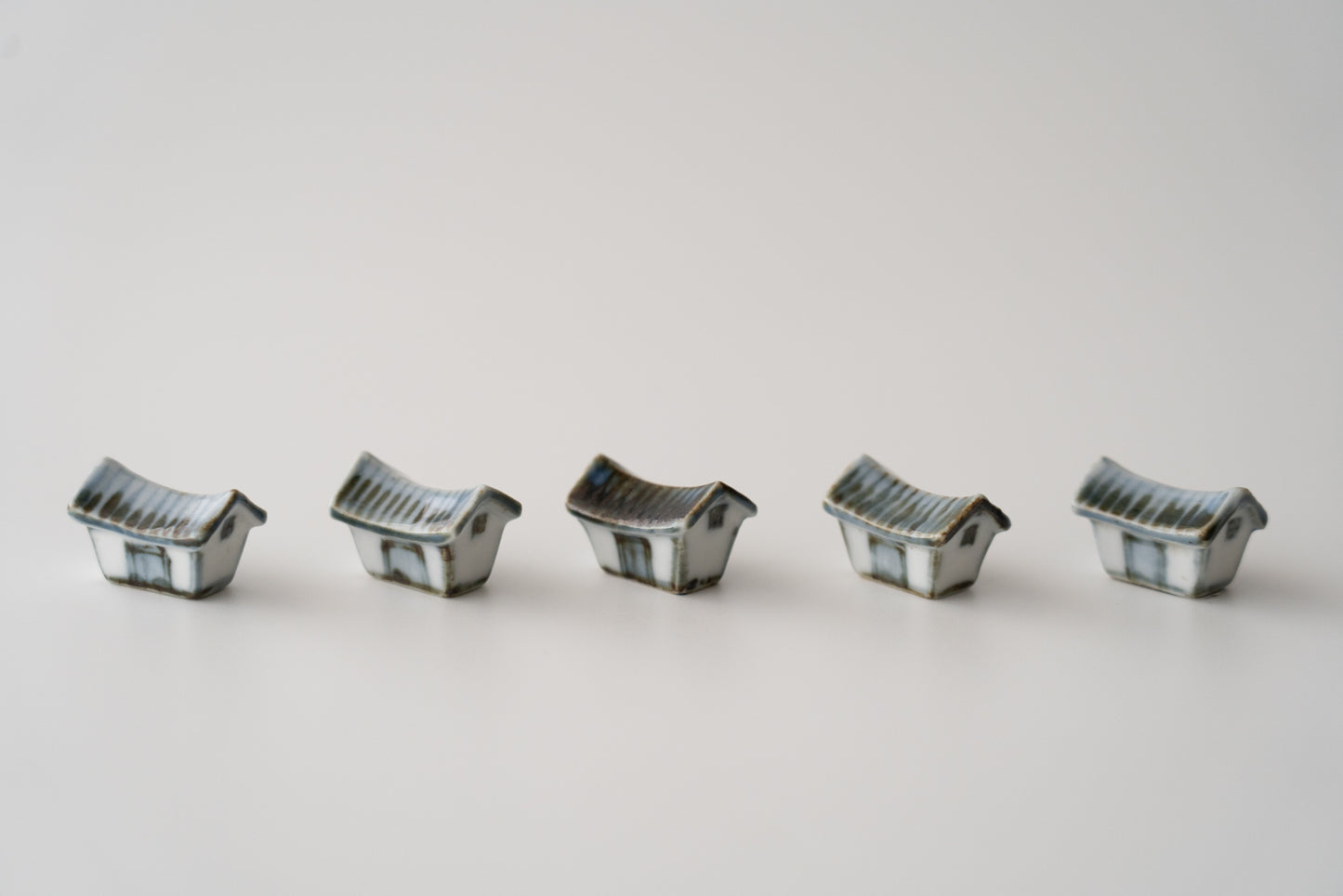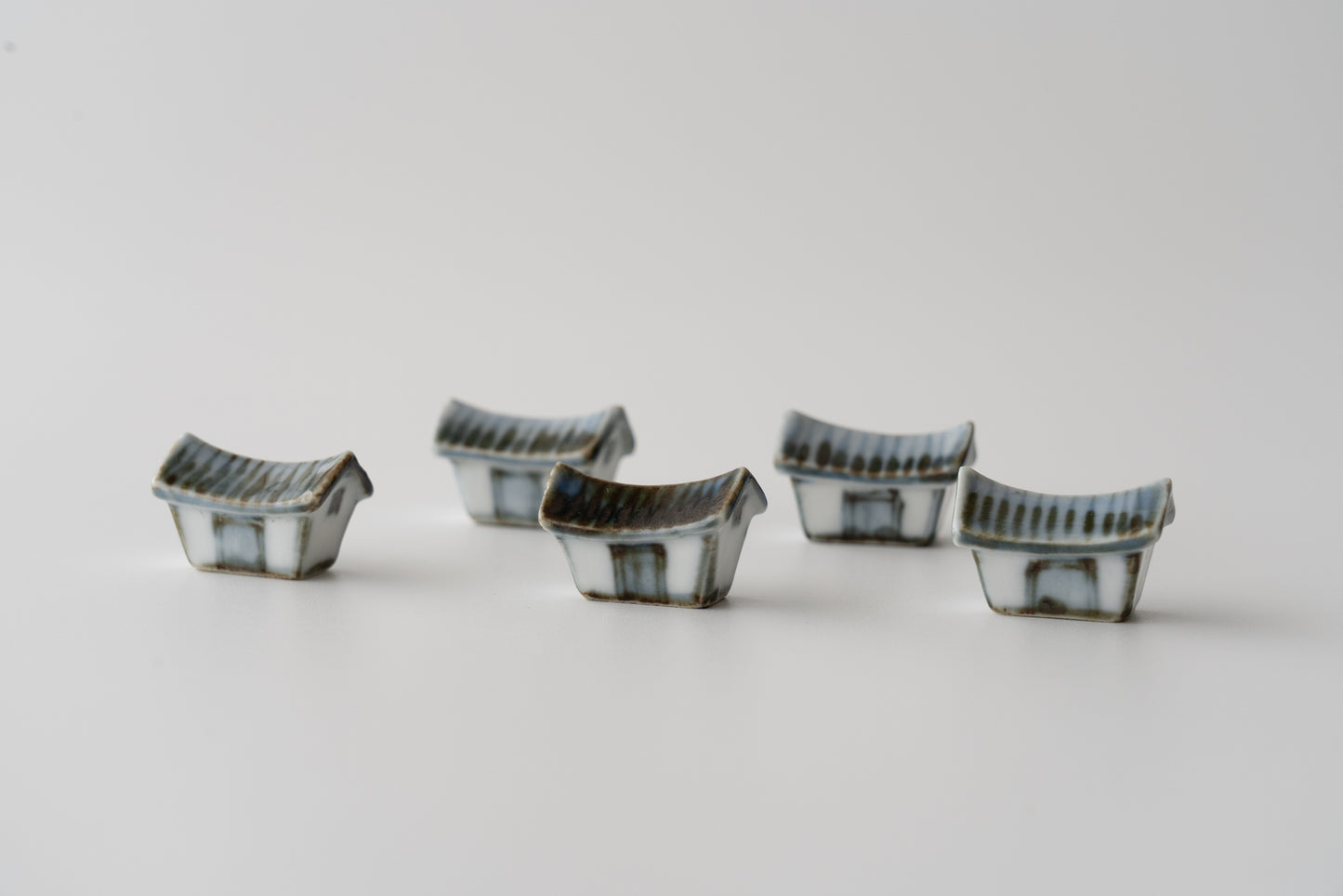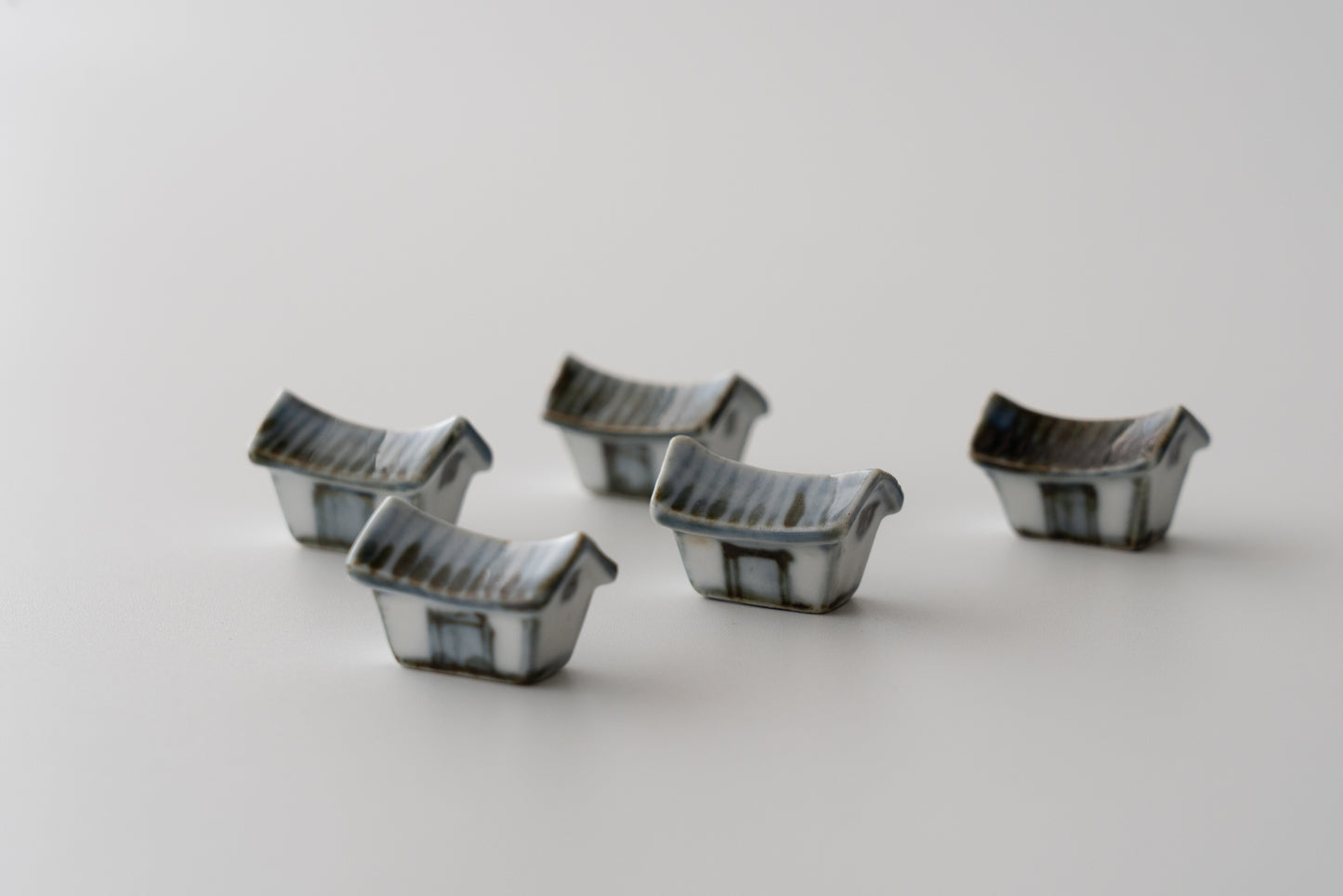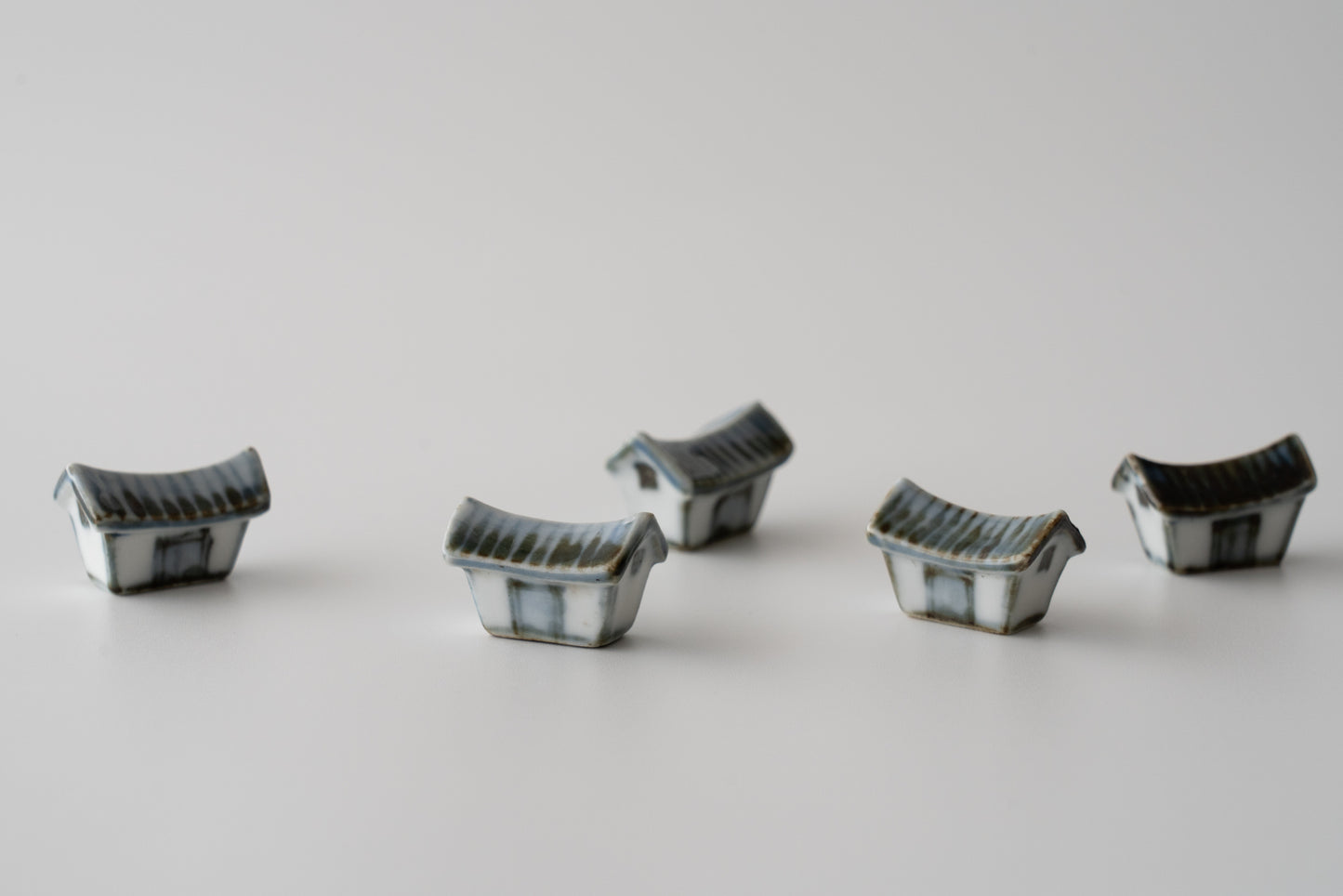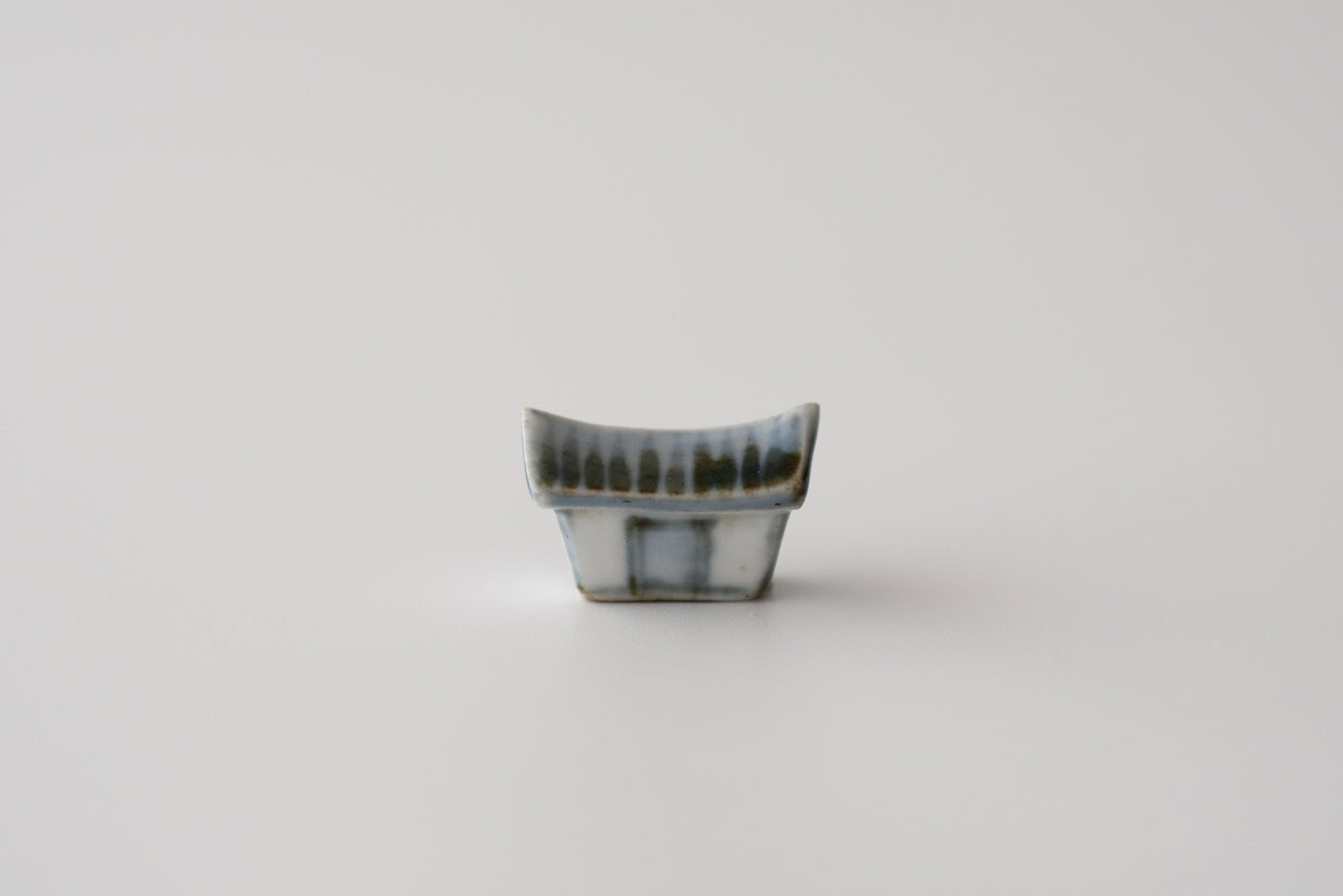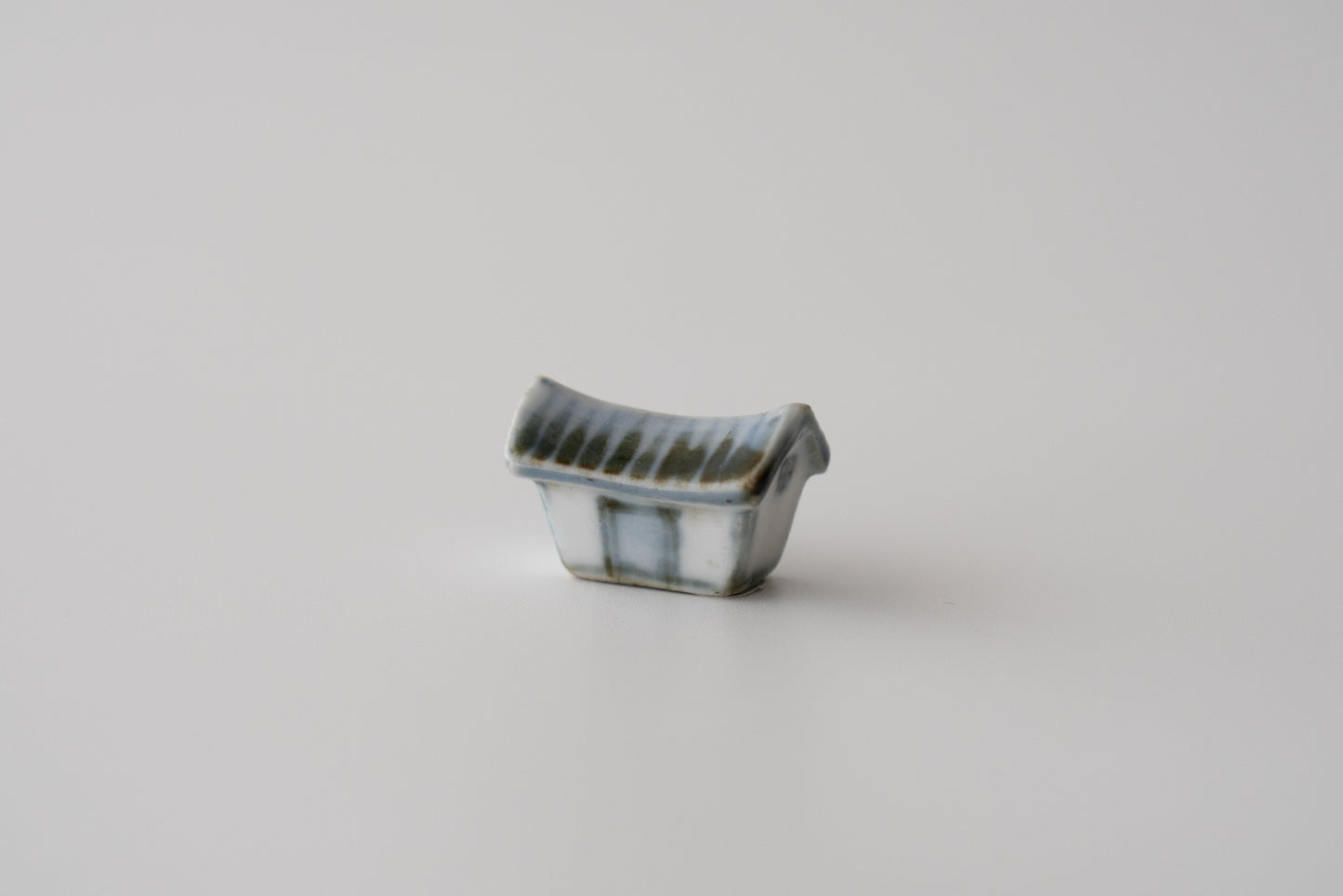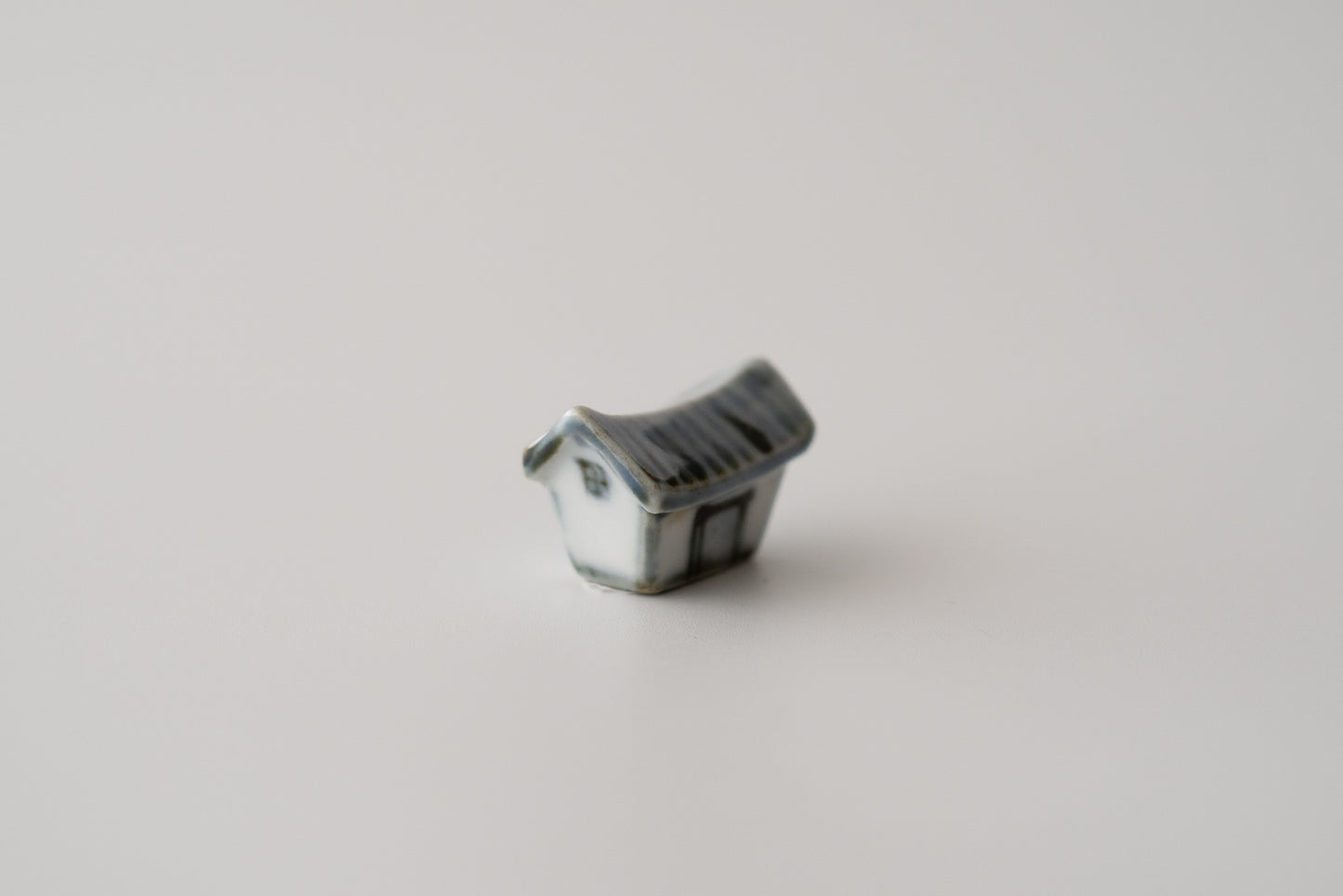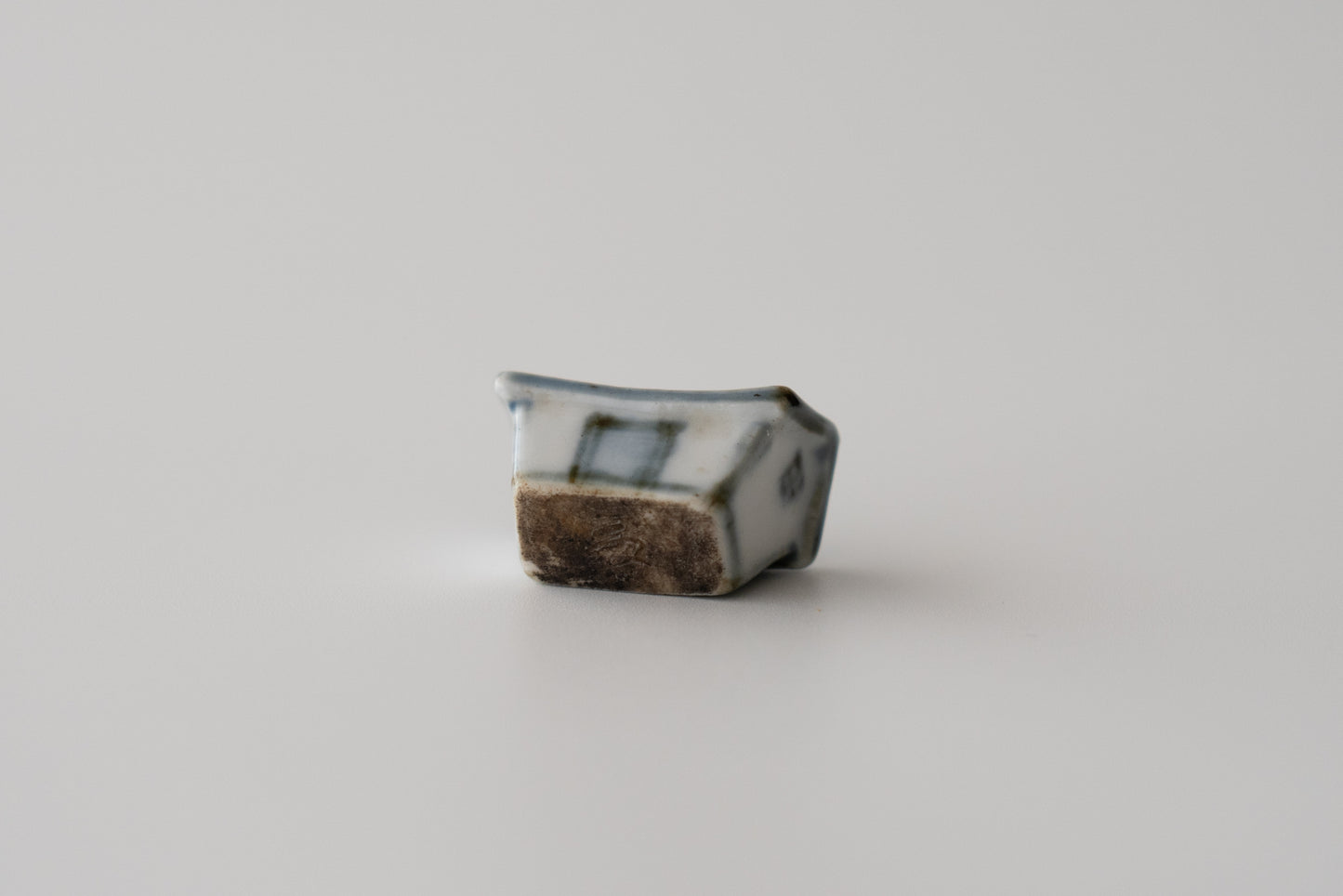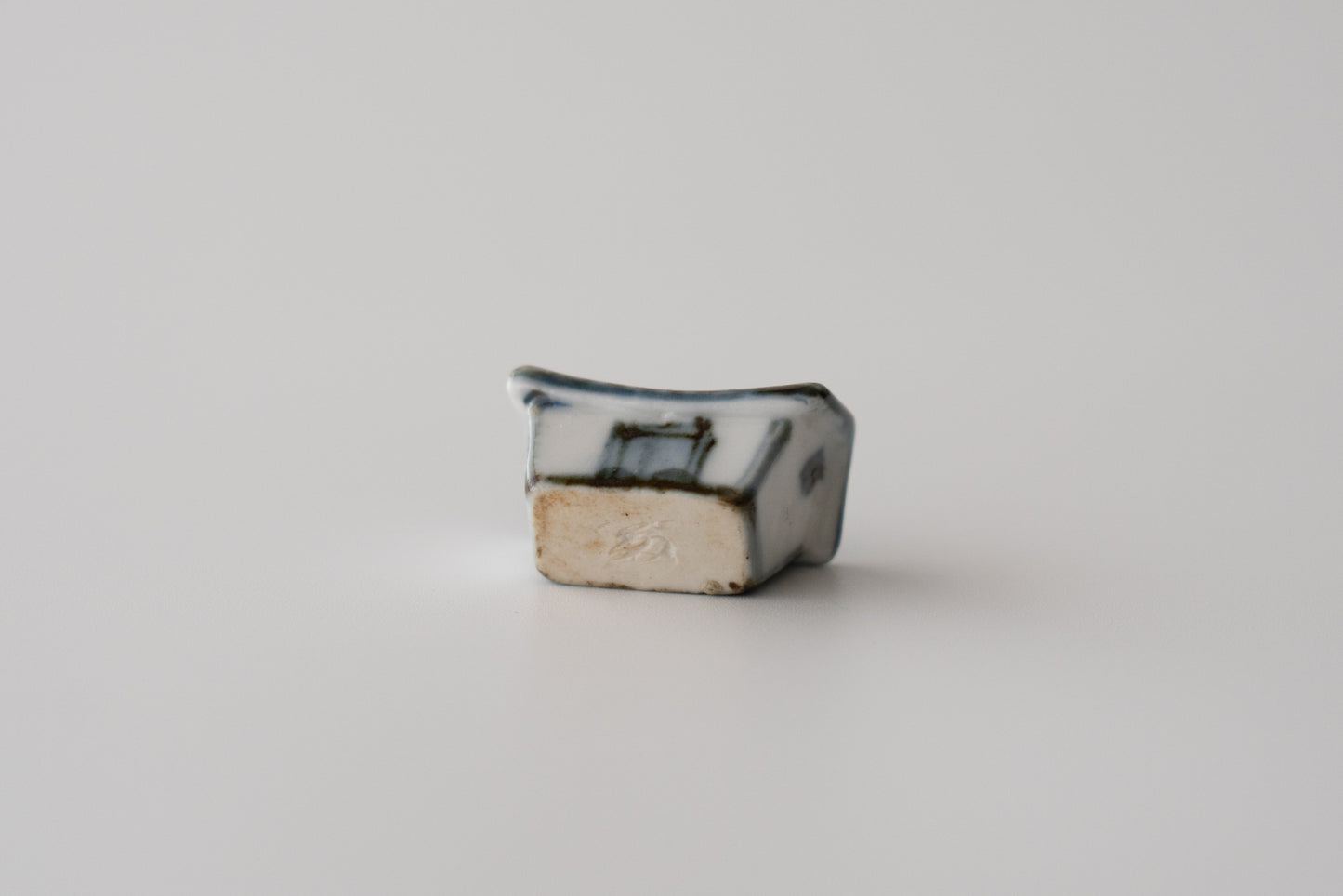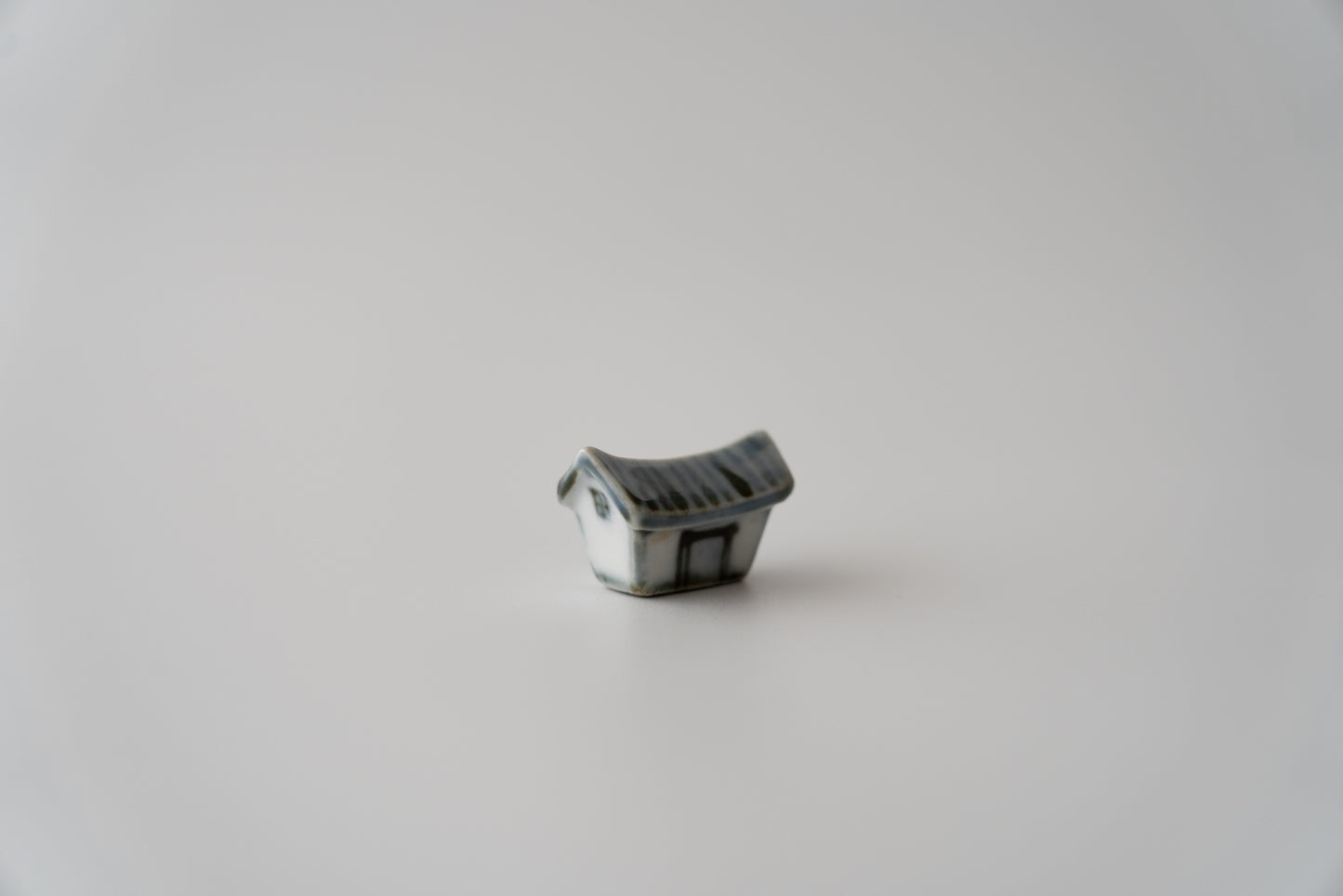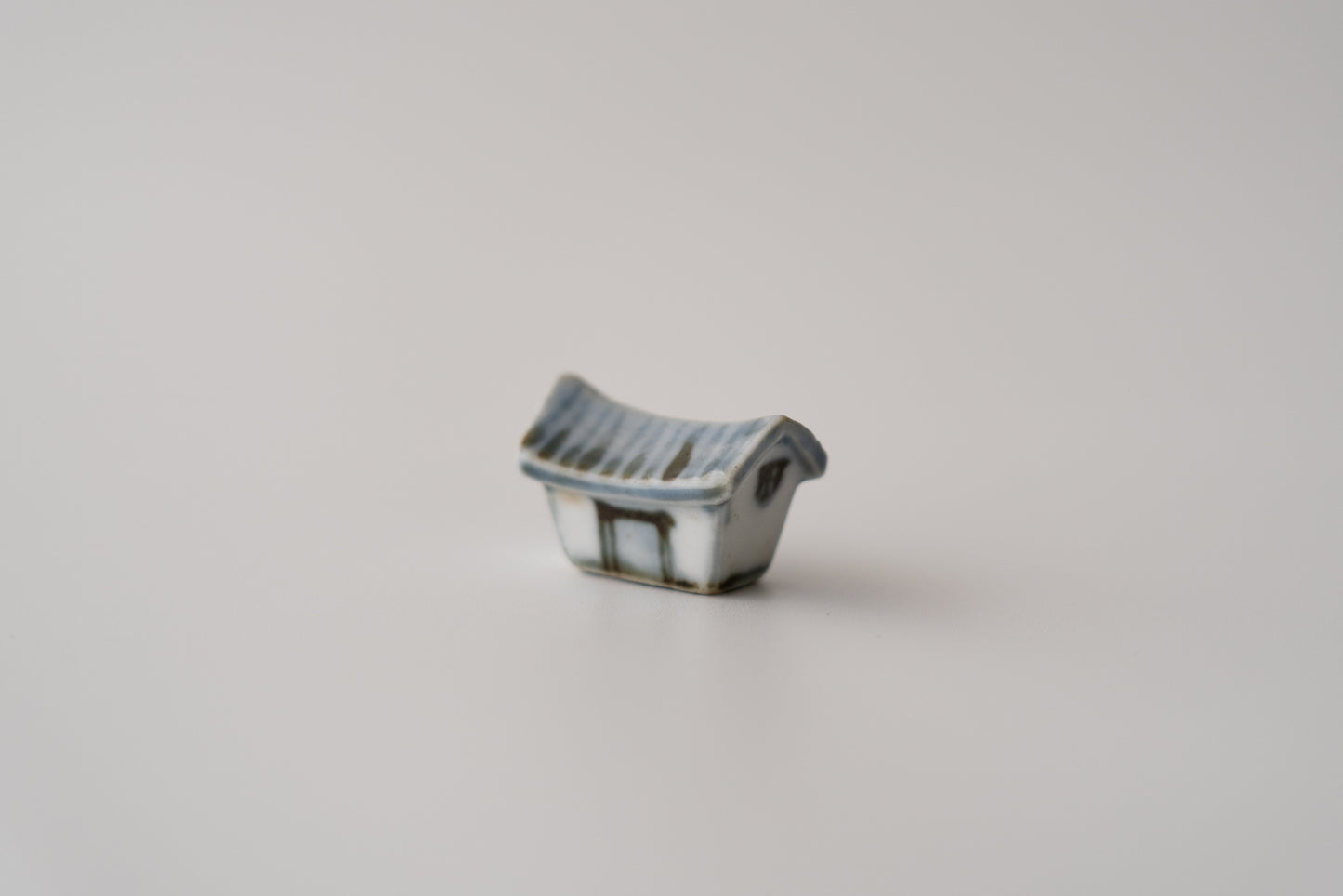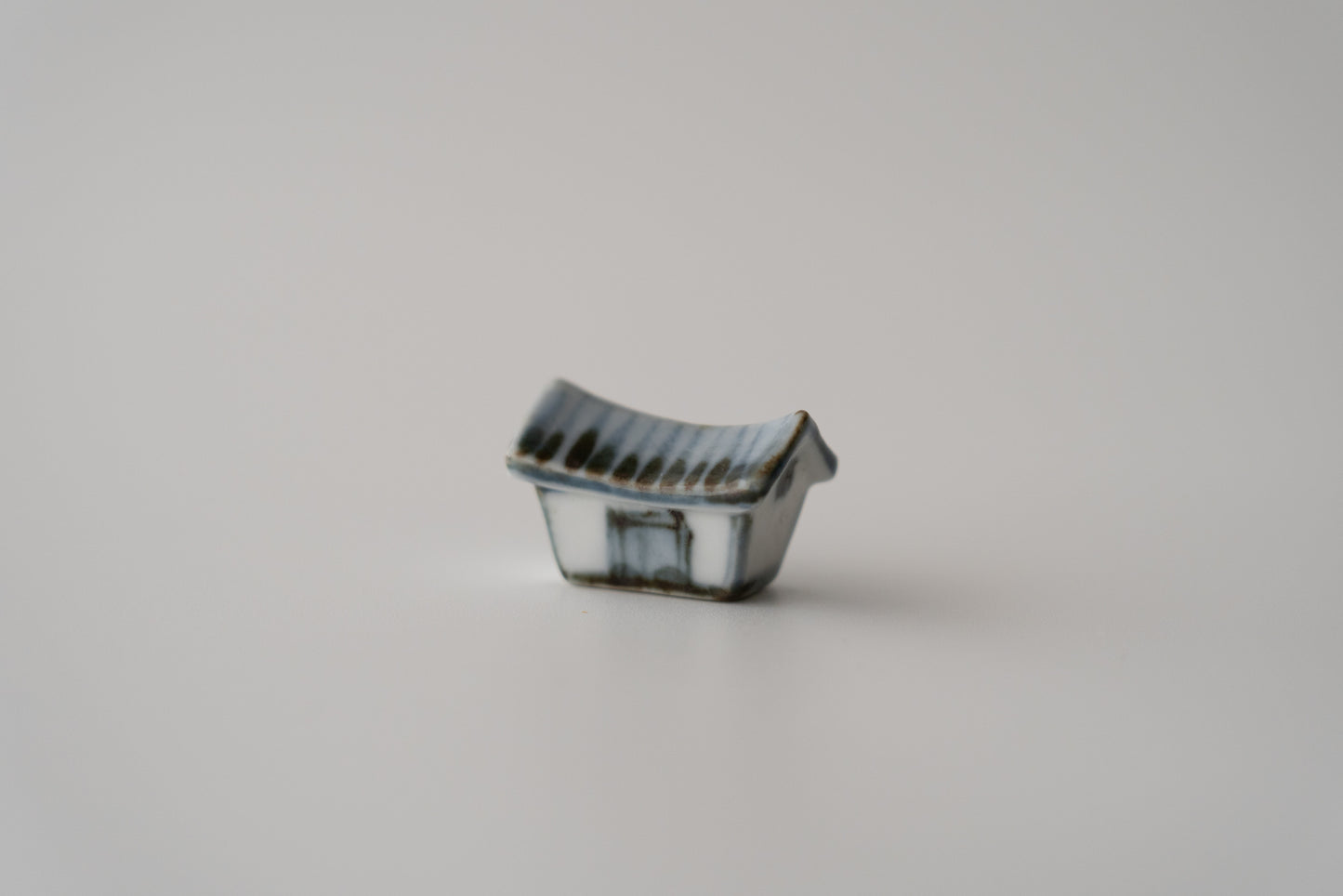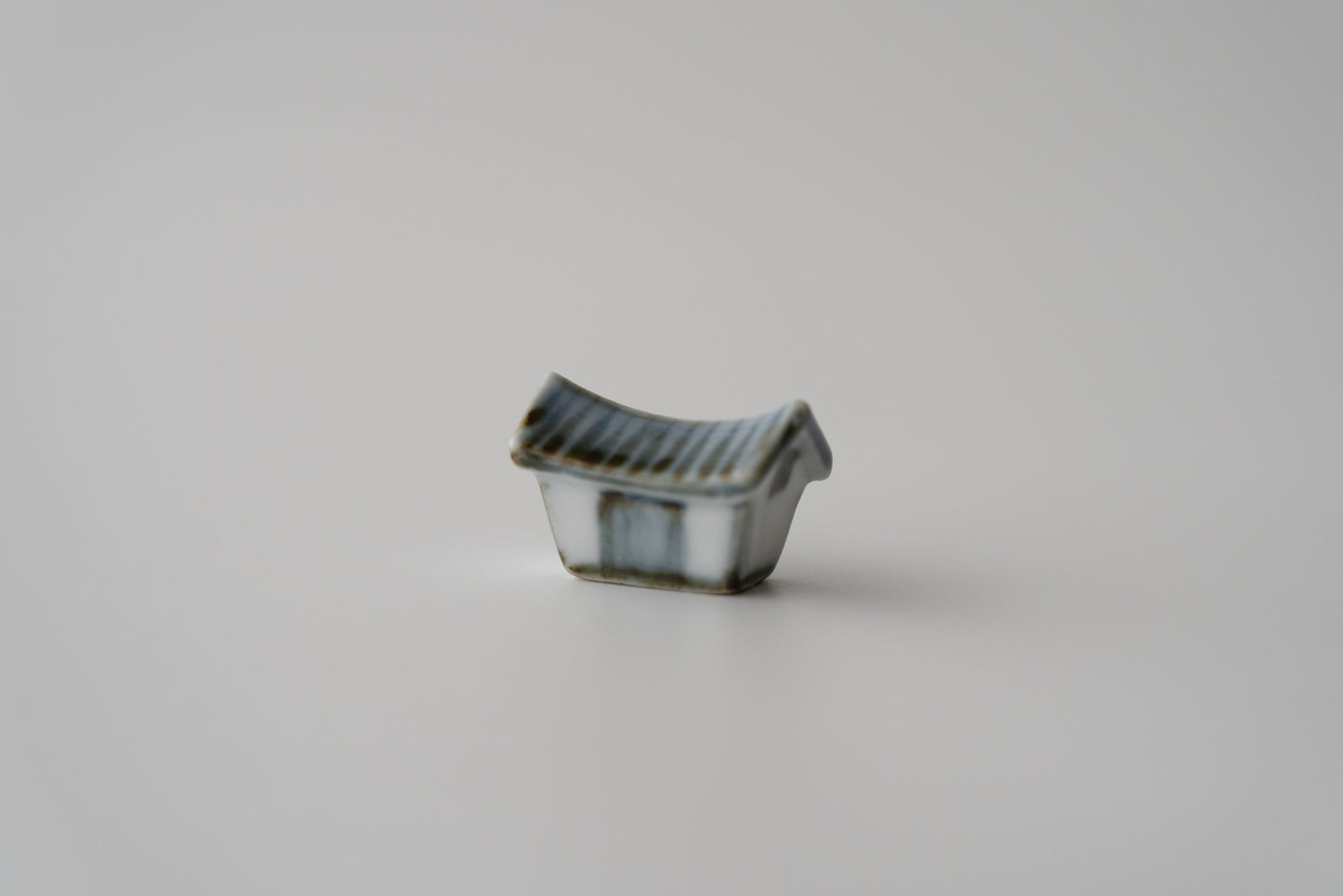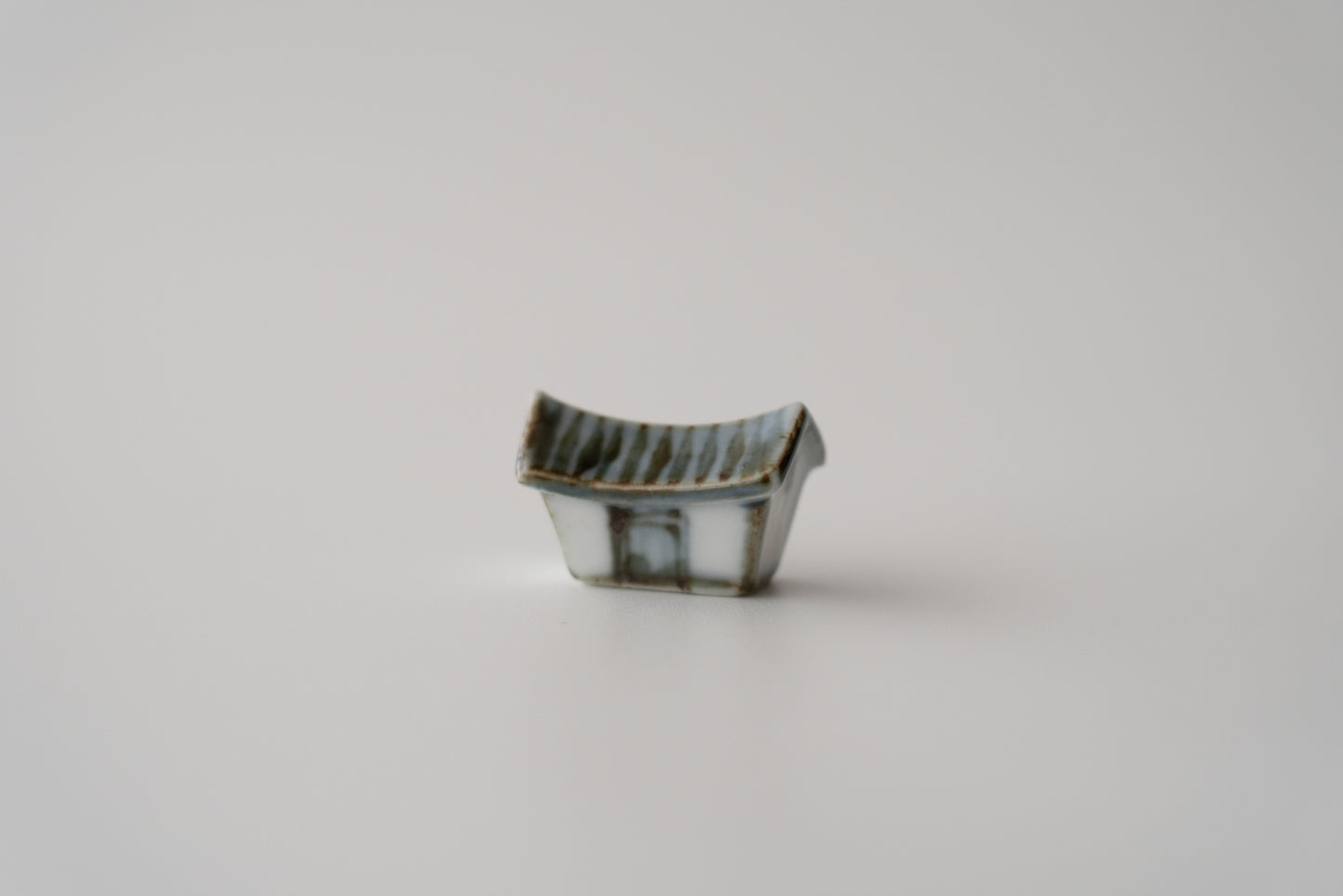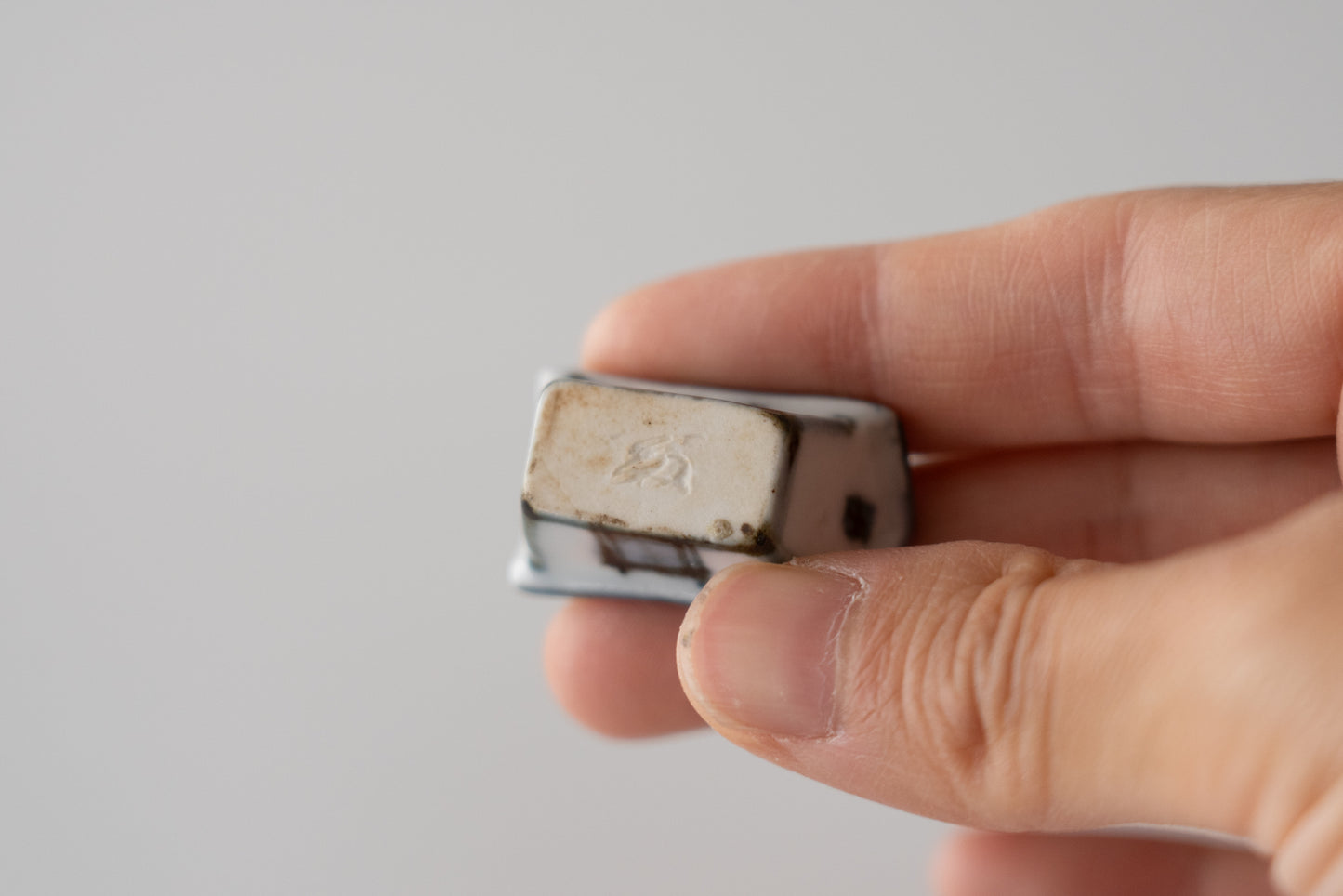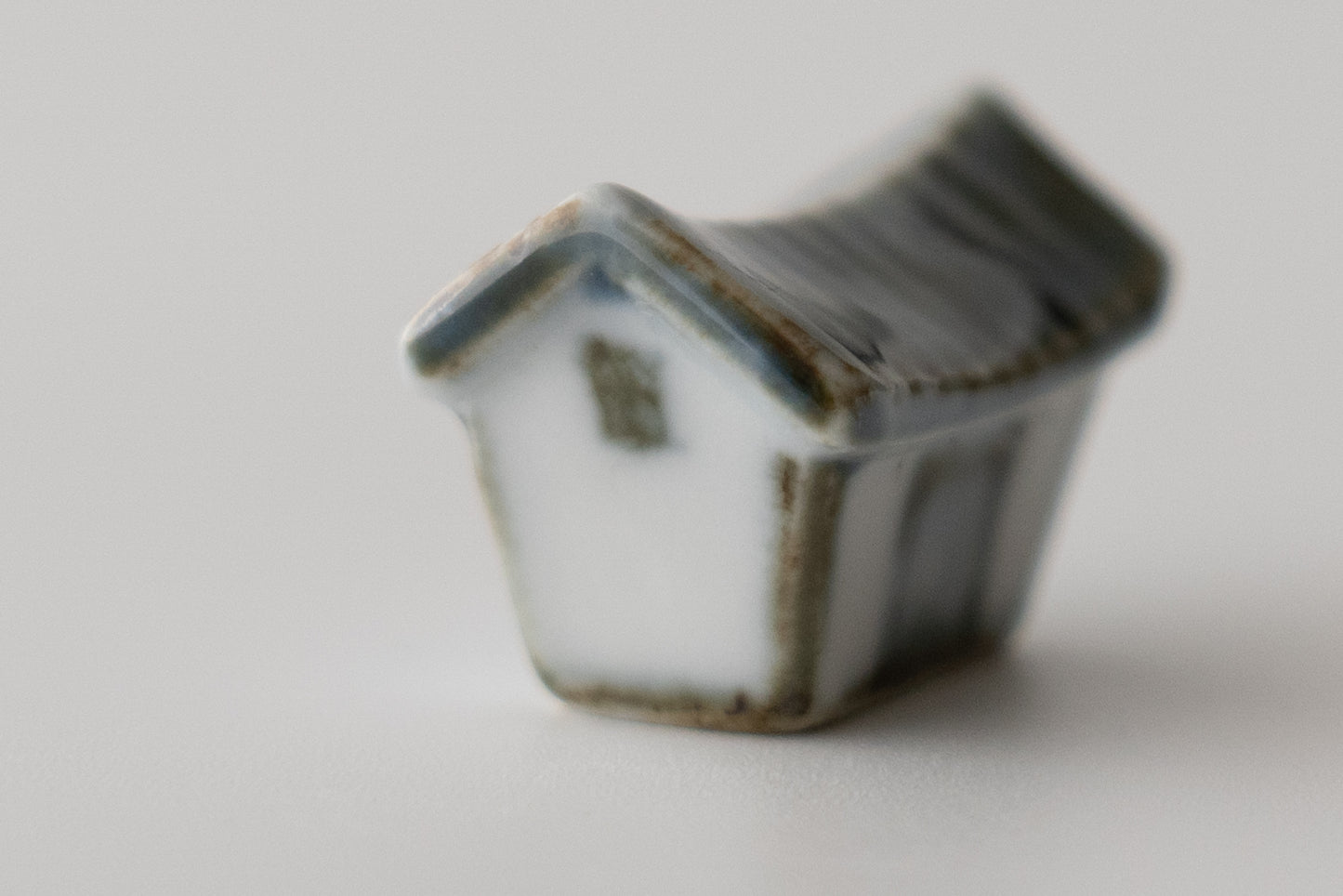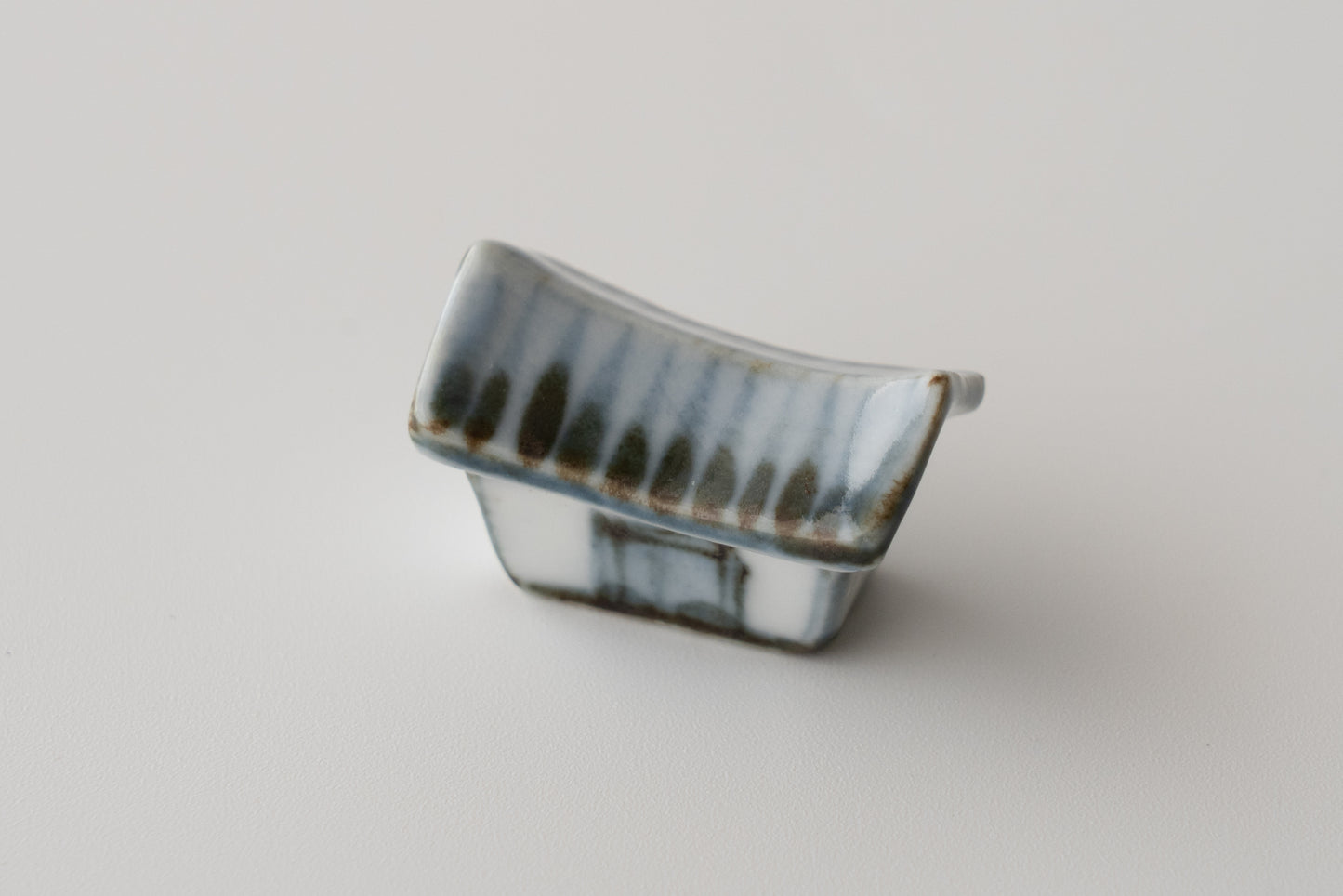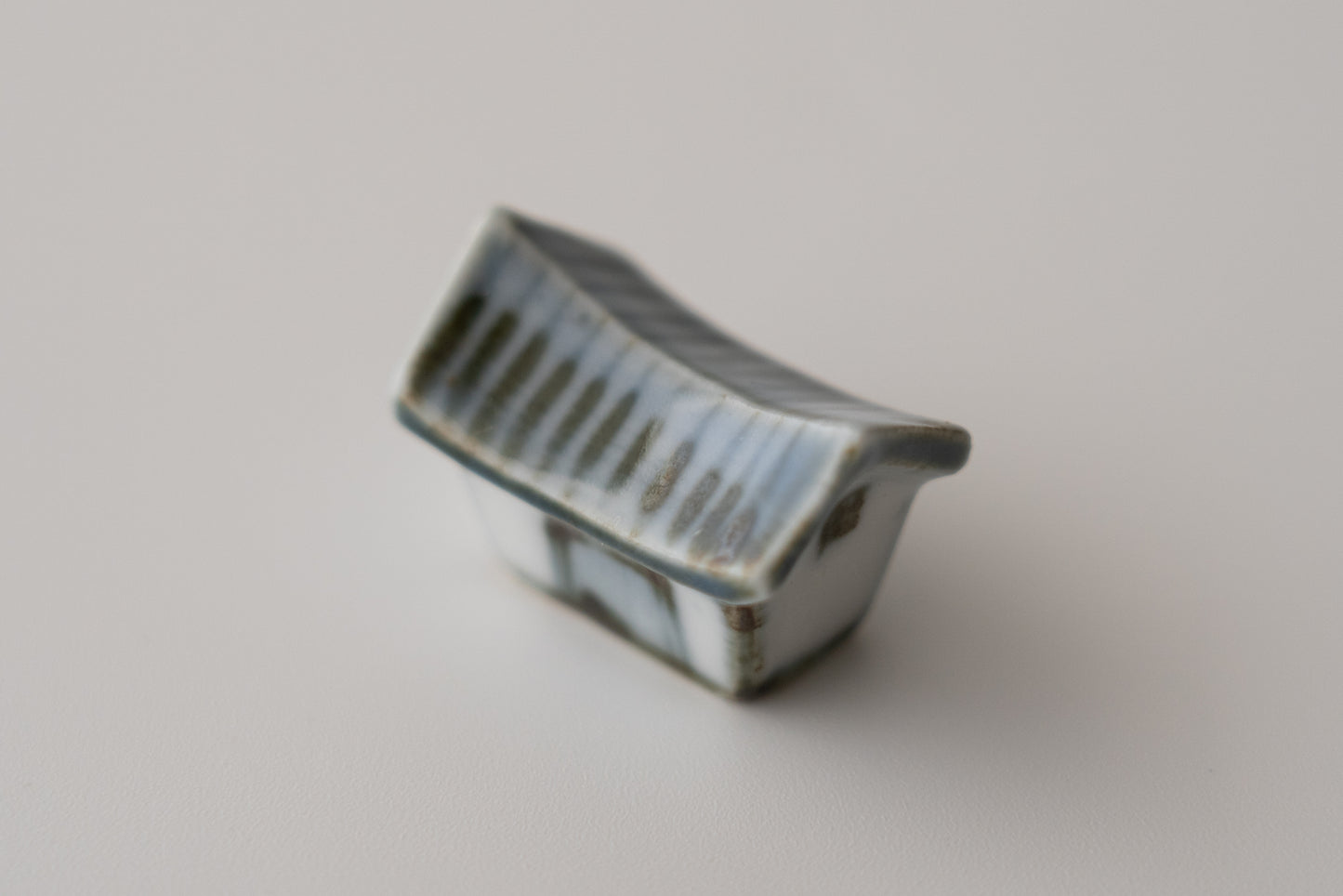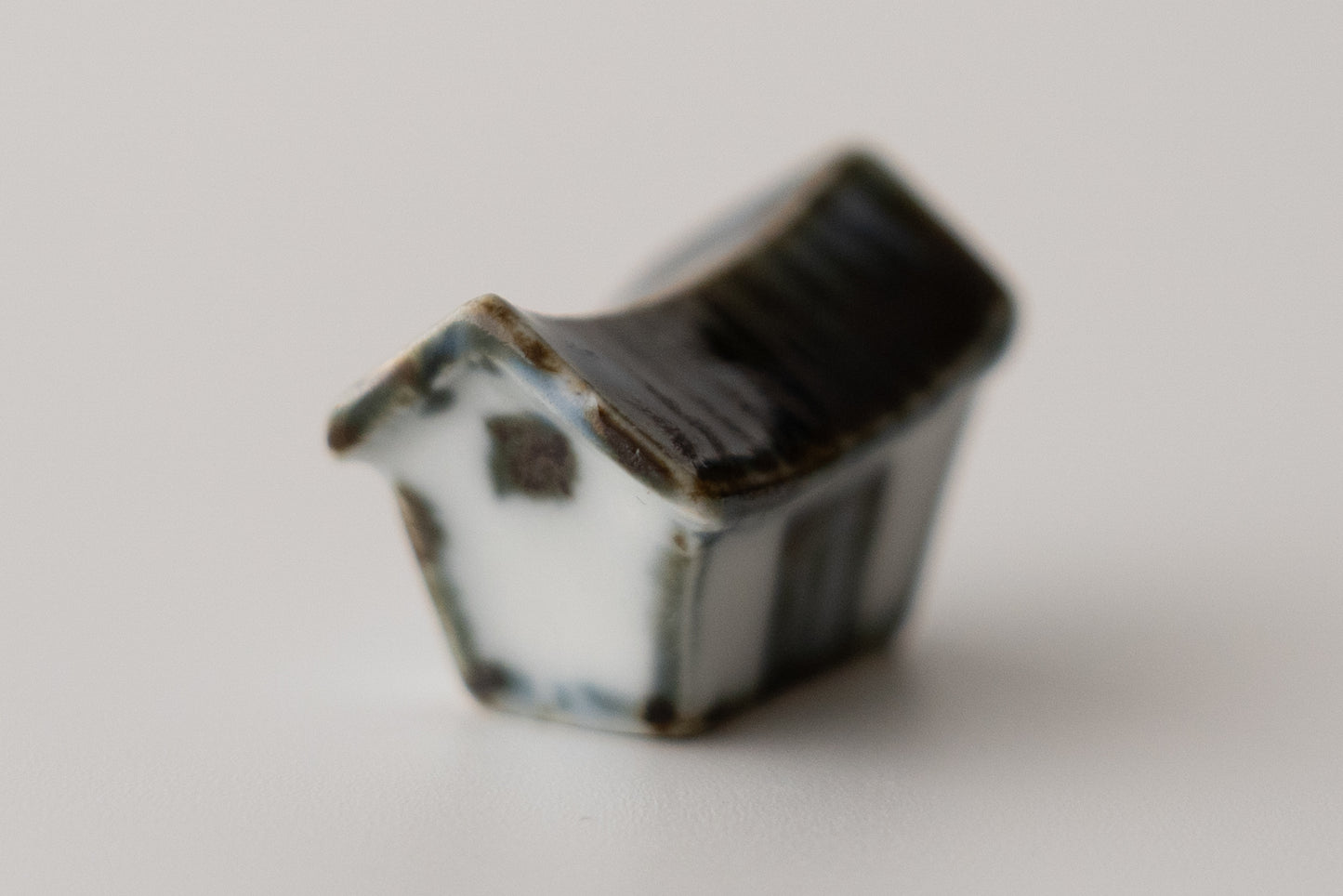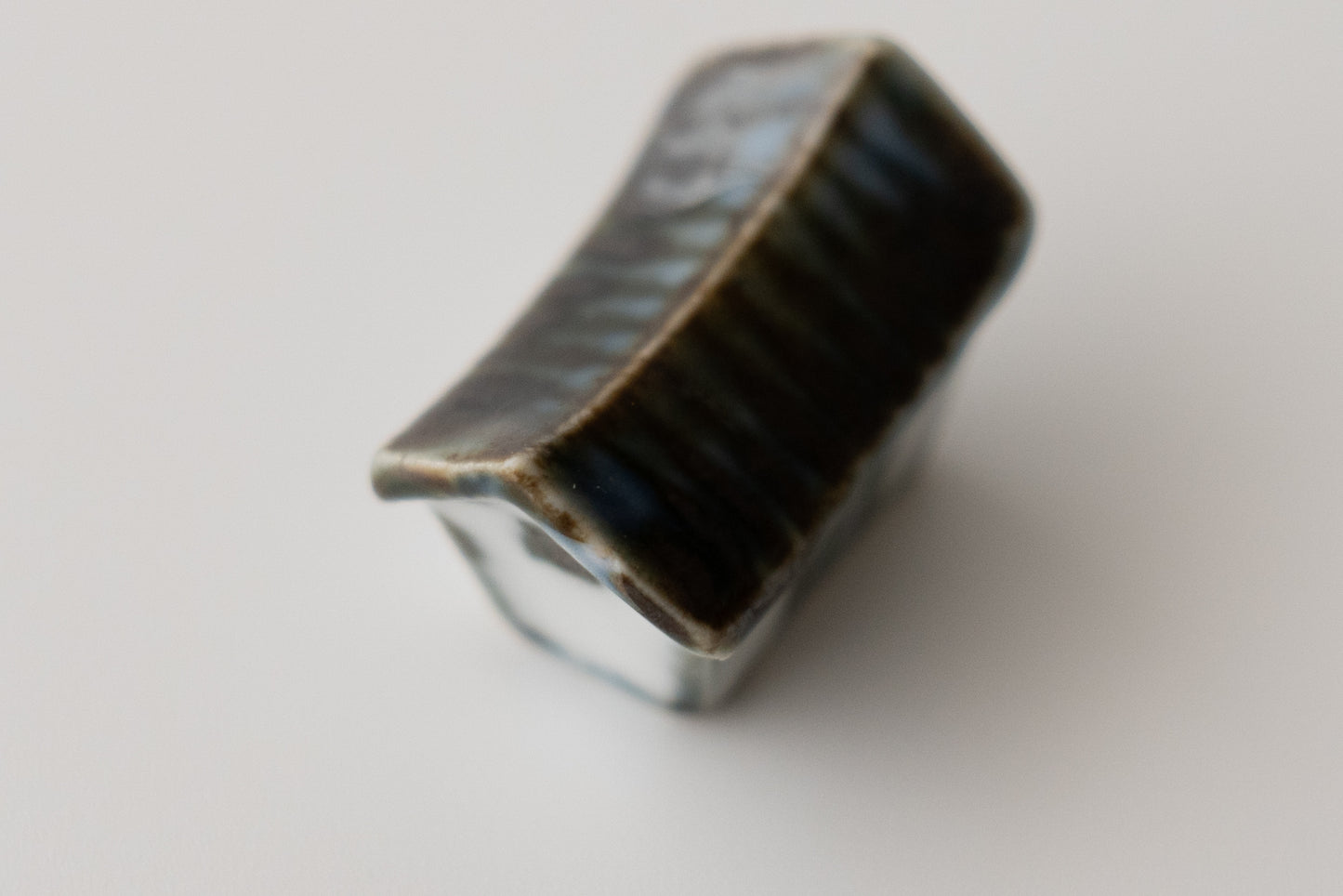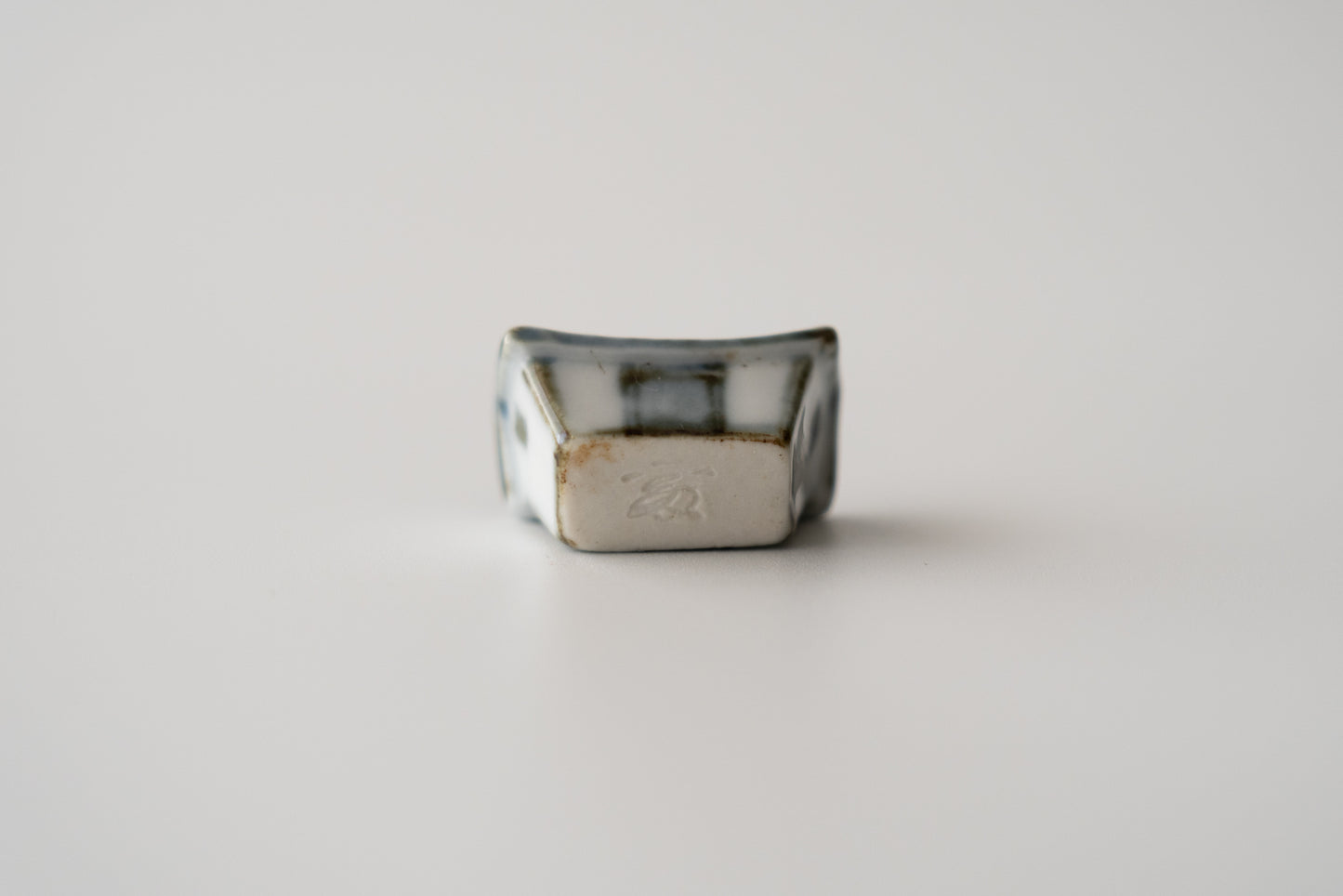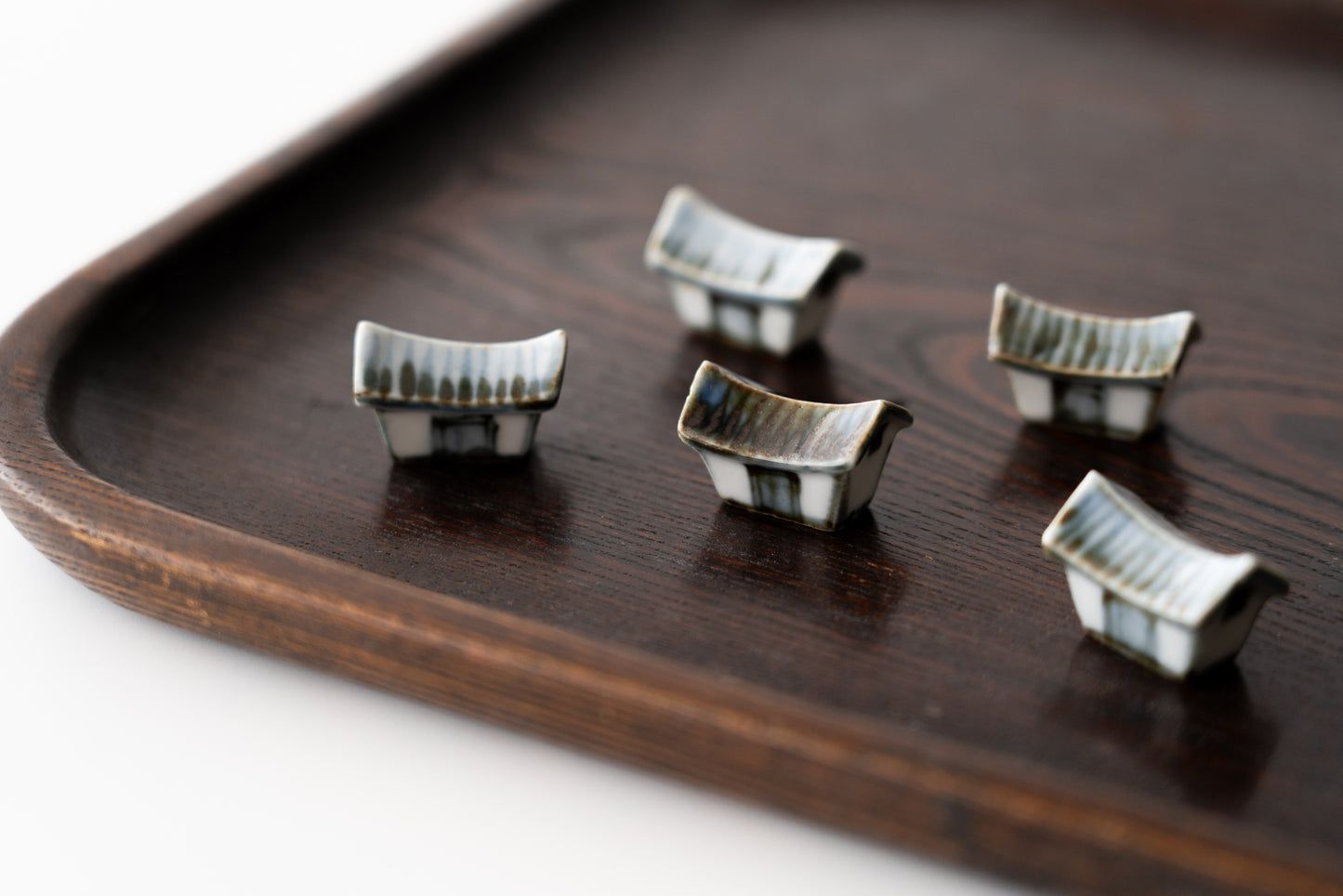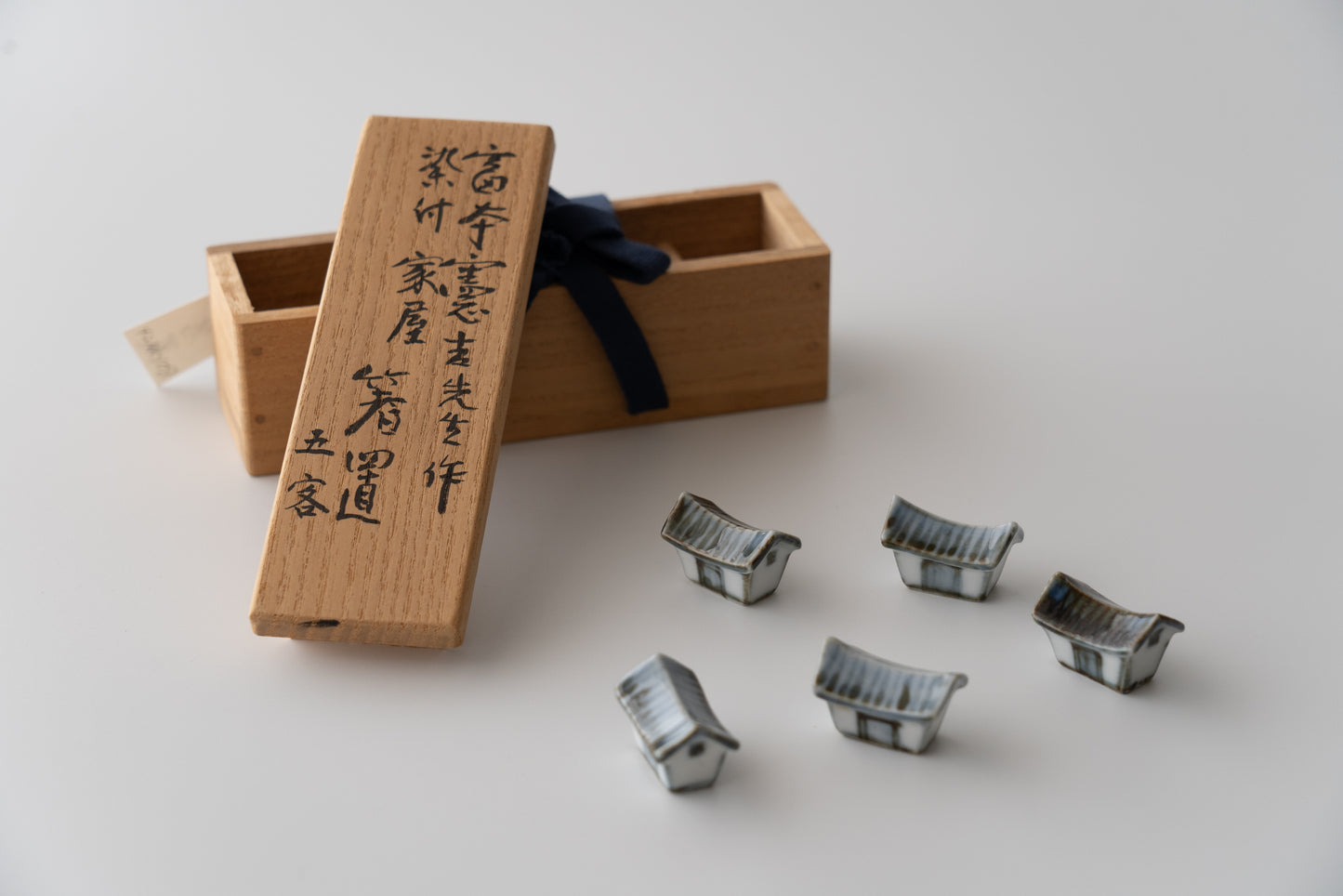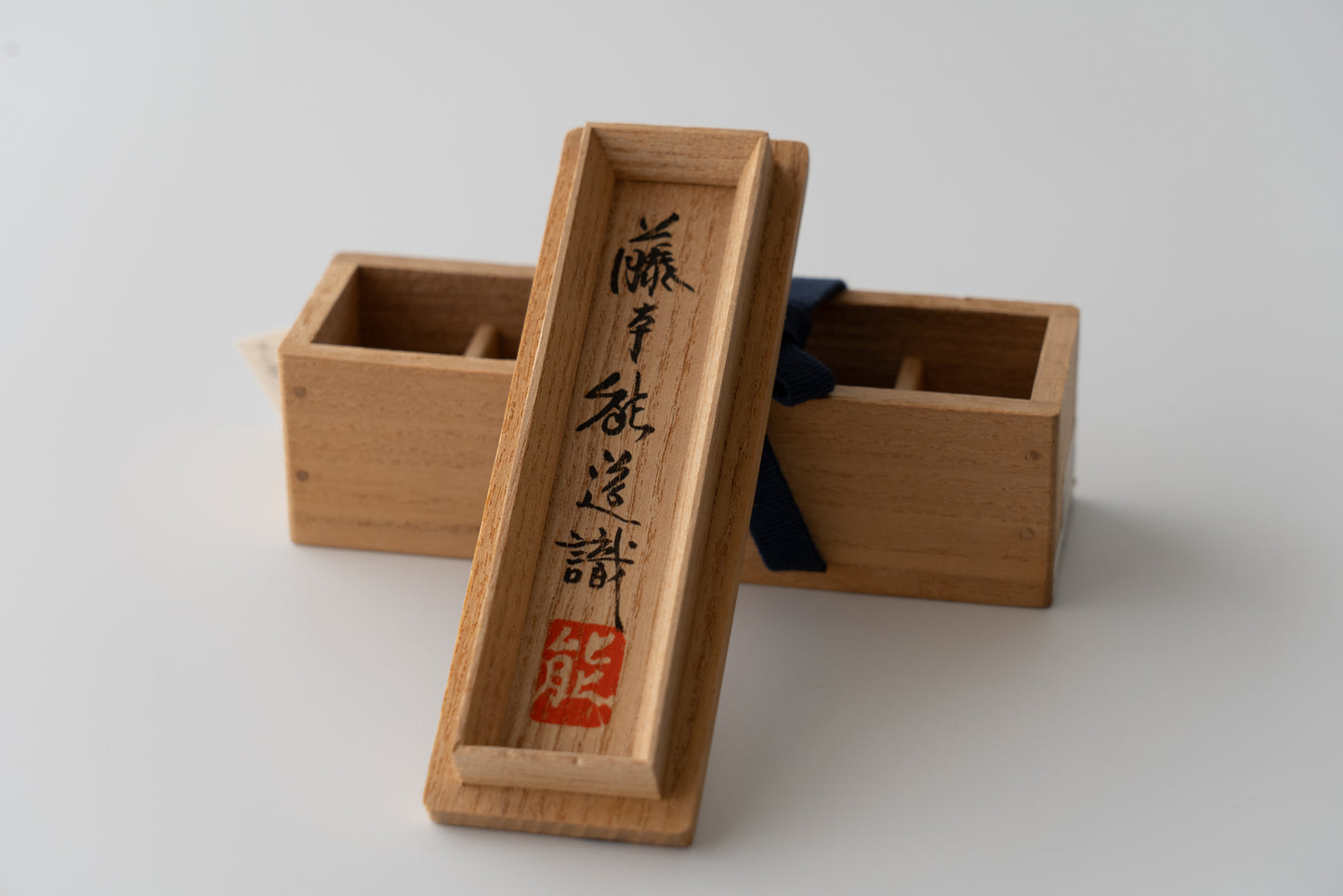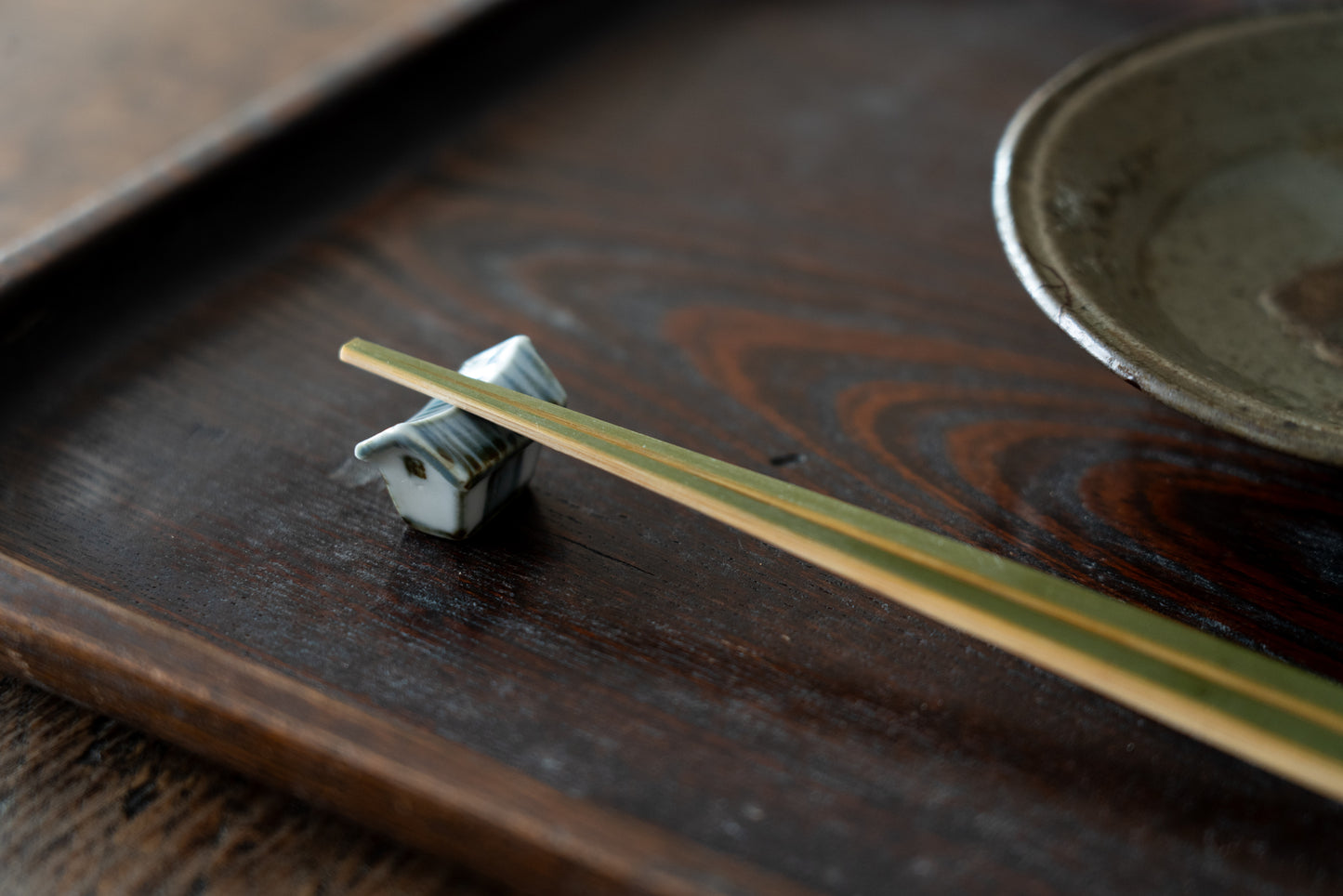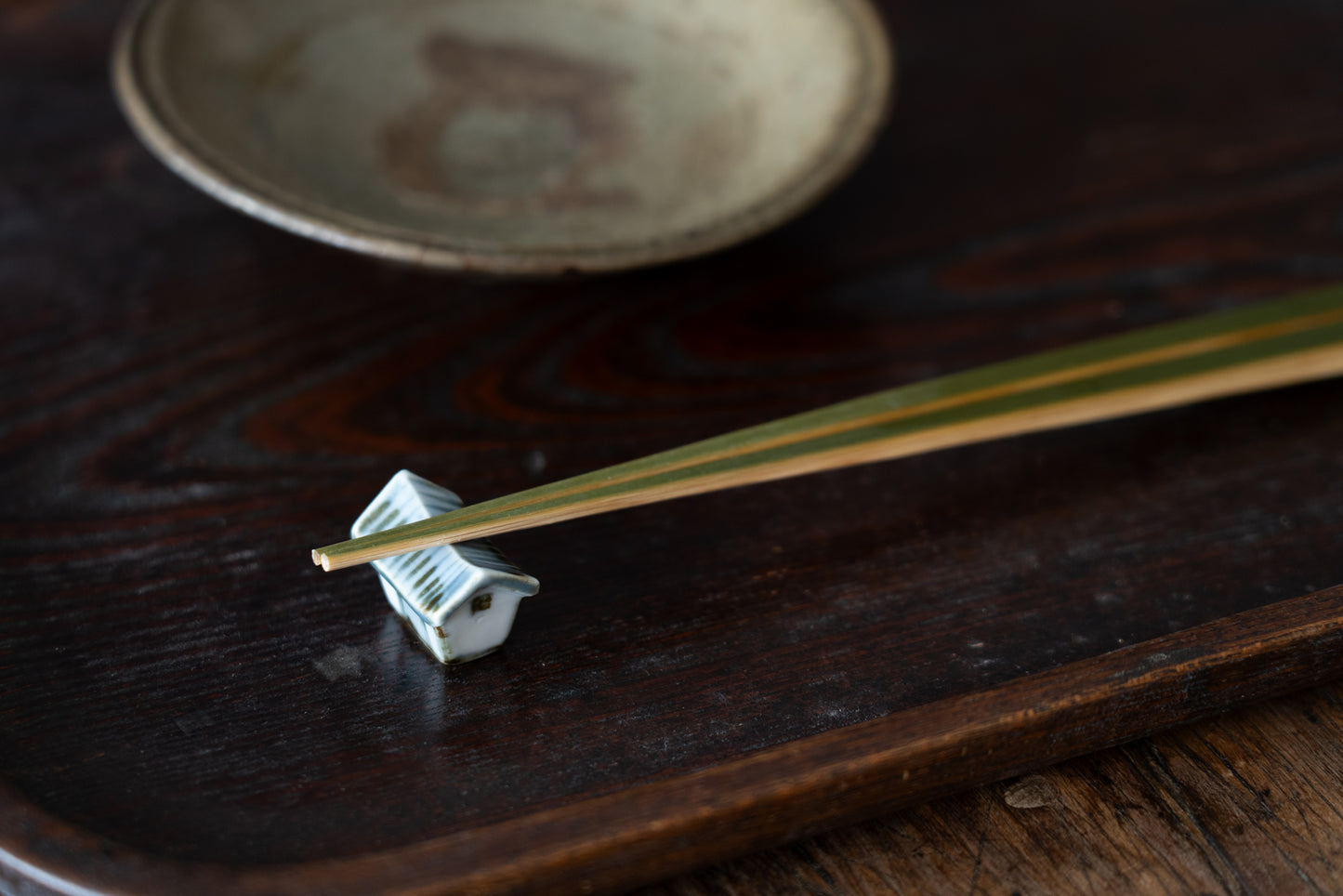Kenkichi Tomimoto, House-shaped chopstick rest set of five
- Region/Era Japan / Showa era, 1937
- Size H1.6×W2.4×D1.7cm
- Condition Each piece has a tiny mark of less than 1mm
- Accessory Paulownia wood box (written by Fujimoto Nodo)
- No. 42nk-108
This adorable, small, house-shaped chopstick rest will have you squint your eyes in surprise. It is a work by Kenkichi Tomimoto, a master of modern ceramics.

Kenkichi Tomimoto is a ceramic artist who is second to none when it comes to his elegant designs and colorful paintings that abstract flowers and plants. Alongside these iconic works, his favorite motif was the "house."
If you ask where Tomimoto's favorite house motif came from, it must have been from Joseon dynasty pottery. House-shaped water droppers, which are also housed in museums such as the Japan Folk Crafts Museum, are difficult to find on the market and are the object of collectors' drool.

Tomimoto, who was friends with Yanagi Muneyoshi and Asakawa Noriyoshi, traveled to Korea in 1922. During his stay, he visited the Yi King Family Museum every day and left behind many sketches, becoming deeply fascinated with the subject. Tomimoto himself created works of art using water droplets in the shape of a house, which also frequently appeared in his paintings, suggesting that he was particularly fond of them.
The distinctive arched roof is reminiscent of a traditional Korean hanok house, but it also looks like a Japanese storehouse. The way the pieces are lined up is extremely charming, and while it has its roots in Joseon pottery, it is a piece that fully displays Tomimoto's unique style. The tiny house, less than 2cm wide, has intricately painted window frames and roof.

A reference for a similar work is the house-shaped brush stand (owned by the National Crafts Museum) made in 1937. This seems to have been made as a brush stand, but it is almost the same size as this work.
▶ ︎Colored house-shaped brush stand by Kenkichi Tomimoto (National Crafts Museum website)

(Source: "120th Anniversary of the Birth of Kenkichi Tomimoto Exhibition", Mainichi Shimbun, 2006-2007)

The character for "wealth" is engraved on the bottom of each of the five pieces. Signature designs vary from era to era, but the signature on this piece matches the one dated 1937. The previously mentioned piece in the collection of the National Museum of Fine Arts was also created in 1937, so we can tell that these pieces are from the same era.

One of the five pieces has a tiny mark less than 1mm in size. Judging from its location, it looks like an original kiln mark, but since that part is not covered with glaze, we are mentioning it just to be safe. In any case, it is not damage that will spoil the overall appearance.

This piece comes with a gift box made by ceramist Yoshimichi Fujimoto, who was Tomimoto's assistant.
Modern ceramics are often left unused and stored away in a box, but these are pieces that we hope you will enjoy using.
[Reference Works]
For more information about Kenkichi Tomimoto, please see the following work page.
▶︎Kenkichi Tomimoto, blue and white persimmon glaze tea bowls with plum motif, set of five
To pick up and see the actual item in the gallery.
Reservation